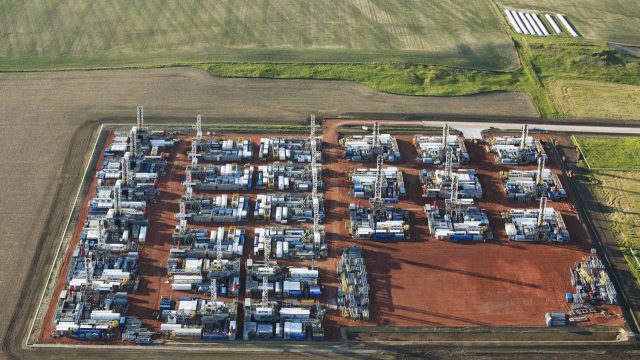North Dakota Oil Rig Count Under 30

Stacked rigs are seen along with other idled oil drilling equipment at a depot in Dickinson, North Dakota June 26, 2015. Since November, the Saudi Arabian-led OPEC cartel has held to a policy of unconstrained output, an approach many suspect is designed to flood global markets with more crude, push prices lower and punish rivals, including North Dakota, the second-largest U.S. oil producer. Picture taken June 26, 2015. REUTERS/Andrew Cullen
The rig count is a big deal to North Dakota.
Each rig comes with a lot of commerce and economic activity around it. There are workers and supplies, and it generates a lot of good things for the states economy. Policymakers in the state use a rule of thumb which assumes there are about 145 in-state jobs tied to each drilling rig.
Plus, you now, there is the oil which comes out of the ground and produces revenue for the oil companies and the mineral rights owners and the state.
So the news that the state’s rig count is now under 30 probably has a lot of people – mostly the state’s lawmakers and public officials – swallowing hard:
State data show 29 rigs in active service in North Dakota, a 9 percent decline from the previous week. The state had 32 rigs actively engaged in oil and gas exploration and production for three straight weeks in March.
The decline followed a week of volatility in crude oil prices, which ended last week with much of the gains for the year erased after Saudi Arabia cast doubt over a multilateral production meeting later this month. With supply-side strains persisting, markets had expected a potential freeze in production would put oil prices in check.
Here’d the trend line on the rig count and daily oil production going back to January of 2014, which was pretty much the peak of the oil boom pulled from the Oil and Gas division of the Department of Mineral Resources. We only have oil production numbers through January. The latest report, which will have February’s numbers, will probably be out in about a week.

Oil production has remained remarkably resilient so far despite the drop off in the number of rigs operating. Oil production in the state has stayed higher than most people expected, which means that these oil wells are beating projections for productivity.
Which is good. But with the rigs falling production will inevitably fall too, because each well sees a production decline over its lifetime.
Industry folks I’ve spoken have made noises about a rebound in oil prices, and thus oil activity in North Dakota, by the third quarter of this year. Those are the bullish ones. The more bearish prognosticators see the price rout continuing well into 2017.
But nobody really knows. North Dakota is at the mercy of global commodity prices.




